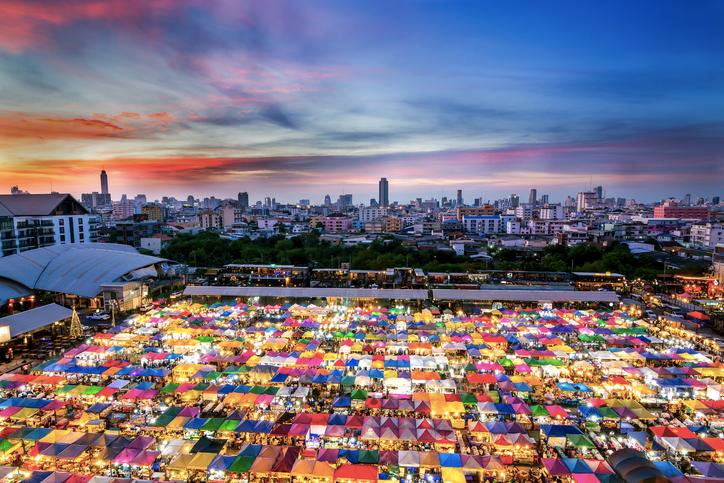We Must Change How We View ‘Community’ to Survive an Increasingly Urban World
by Douglas Nuttall, P.Eng. Senior Civil Engineer, Ottawa, Canada

We have a problem.
The population of the world is growing. Almost all of that growth is occurring in urban centers around the world, and each city already draws on more resources and ecological services than the land that it manages can support - many times over.
This trend is not expected to decline. While more than 50% of the world’s population currently lives within urban centers, that will increase to more than 65% within 25 years. We need more and bigger cities, and we don’t have a way to maintain the metabolism of these cities within the ecological constraints we already have.
This presents both a complex challenge, and some opportunity, as the world adapts to an urban way of life.
What are Cities?Cities can be parasites, drawing on resources while discharging wastes in the surrounding areas. This can badly disrupt chemical cycles, or break them altogether, creating dead zones and waste plumes. Cities acquire critical resources from any source and are highly dependent on local and international trade to keep them fed.
Cities can be economic engines, with their density allowing for higher degrees of specialization, inter-dependency and efficiency. GNP automatically increases with city density and size, while specialization allows for technological developments that were still the height of science fiction a few years ago. Cities also house the hospitals, universities, governance, financial services and most of the industrial capacity that supports all of the rural population.
Cities can also be social laboratories, with the concept of development itself meaning that cities are in continuous flux. Decay and renewal cycles ensure that some of the best of the past is kept, but the majority of the city will always be ‘new’.
Each of these perspectives on cities is further complicated by deep transitions across societies and the world itself. Peak conventional oil has already occurred, while peak conventional agriculture is coming in less than five years and peak fossil carbon soon after that. This means that energy and food are both due to become much more expensive, reducing the amounts of energy and labor available - thus increasing costs. Most of the infrastructure we are building today in our high-energy-intensity present will be receiving its first maintenance in a low-energy-intensity future.
Absolute sustainabilitySo, sustainability is clearly required.
There are ample descriptions of sustainability, but we tend to focus on ‘relative sustainability’ (doing things better so it will be easier to meet the needs of the population in perpetuity). And sustainability has remained a wicked problem that escapes solution.
If we shift the focus slightly to ‘absolute sustainability’ (doing things to a level so that needs will be metin perpetuity), we can begin to resolve the upcoming urban challenge.
Absolute sustainability is the ability of a community to have the needs of its citizens met, using the resources and ecological services derived from the landmass they manage, in perpetuity. This is measurable. And if it can be measured, it can be designed for.
Where do we start? The first step is to look at the scale of landmass required to reach this high bar. To ensure that community residents are able to consume at a sustainable rate that meets their needs, we must redefine how we view a ‘community’.
The idea of community that most of us recognize was developed decades or even centuries ago, when our needs were met from local resources and luxury products from ‘away’ either showed up or didn’t. Globalization changes this, and makes the whole world more efficient, but much less resilient.
To achieve absolute sustainability, ‘community’ will have to include at least a city and the surrounding rural areas, but it could extend much farther than that. Toronto, for example, has an ecological footprint equal to about one third of the province of Ontario, without considering the consumption of the people who live in that third. The required scale of community could be larger than some countries.
The city of Geneva is a good example of this. It is a population of about 200,000, on about 16 sq.km. With the current Swiss per capita ecological footprint, it needs about 1,000,000 global hectares (GHa) to support its population (hundreds of times what is available). Its needs can’t be met from within its municipal boundaries, so we expand the ‘community’ to the whole of Switzerland. Now, a population of 8.3 million people on 41,285 sq.km. is much more closely aligned with its ecological footprint (about 4 times what is available), though still unsustainable. To make this alignment closer, we must reduce consumption of some resources and ecological services while making arrangements with other communities to acquire critical resources where we have a deficit and they have a surplus. And we must make up for any change in quality of life that comes from a reduction of resources by investing in human development.
Meeting community needsTo achieve absolute sustainability, communities must identify where needs are not being met by diagnosing the symptoms. These can be unique to the specific city, or they can be global. A lack of fitness leads to obesity. A lack of sleep leads to insomnia. A lack of food leads to malnutrition. And so on.
Each community has to decide what their boundary of needs are. For example, Canada thinks it has food security, so it may decide that activities related to importing food wouldn’t meet needs. Japan may decide that all food-related activities meet needs.
The community has to know the relationship between resource use and time use to meet needs, while considering both met and unmet needs, throughout the community. This will allow them to analyze policies intended to reduce consumption while increasing quality of life.
Communities would have to create co-management relationships with other communities to both manage and have access to the critical resources it uses, so that disruptions in trade do not automatically cause collapse of their systems.
Communities must ensure that ecological, economic, and social resiliency are increased simultaneously. This means maintaining:
- a non-declining portion of the biomes that they manage as ‘wilderness’ that is neither a source for resources nor a sink for wastes;
- a financial reserve in the individuals, families, business, and government to be able to address financial shocks. Restocking the reserve must be quick, but not to create a hardship;
- that all of the people can meet all of their needs in something less than 24 hours per day per capita. Not all of the people must have all their needs met all the time, only that it must not be impossible for them to meet them all.
Communities would have to make a number of choices and decisions – likely through a combination of civil society groups, politics and governmental agencies. Business can also help to facilitate the process. Through CSR initiatives and its operations, business can work with the politicians, bureaucrats and civil society groups to do the work required to set the priorities and boundaries for meeting needs.
This will have to be done at a range of scales, from a city and the surrounding rural land, through regional and province/state scales, and including national or even supranational scales. All parties are players in this game.
And that will do it.
Concepts such as ‘circular economy’, ‘sharing economy’, ‘CSR’, ‘Triple Bottom Line’ and so on all provide direction on how to do pieces of it. The community provides the over-arching vision of what they are trying to achieve, and then business and government can work together to ensure that the various pieces of the puzzle are able to be assembled to achieve a real solution to the underlying problem.
That’s how we will accommodate a more urbanized society, the world over. ‘Growth is Good’ can be replaced by ‘Good Growth is Good’, and cities can take on a new role: leaders of a sustainable world.
None of this is easy.
All of this is doable.

